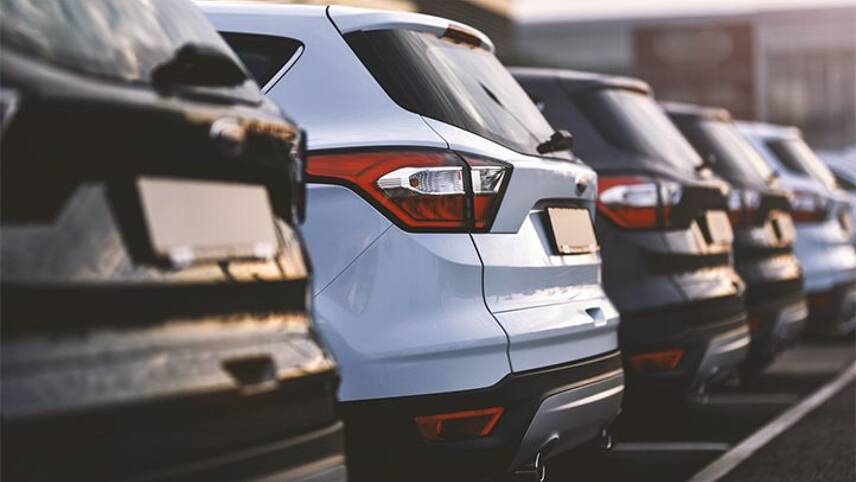Register for free and continue reading
Join our growing army of changemakers and get unlimited access to our premium content

SUVs consume
According to the analysis, global car sales rose 4% year-on-year in 2021 amid the ongoing economic recovery from Covid-19 and the lifting of lockdown in many nations. This increase in sales came after a 16% year-on-year decline in production in 2020, as recorded by the International Organisation of Motor Vehicle Manufacturers (OICA).
The IEA has highlighted how SUV sales have weathered the Covid-19 pandemic more strongly than sales for other kinds of road vehicles, with a 10% year-on-year increase in sales in 2021. This is equivalent to 35 million additional vehicles which, over their lifetime, will generate some 120 million tonnes of carbon emissions. SUVs consume, on average, 20% more energy than a mid-sized car and almost all of them (98%) are not fully electric.
While more than 30 countries have set deadlines for ending new petrol and diesel car sales, such as the UK (2030) and the EU (2035), the IEA acknowledges that many nations have not sent this clear policy signal. Its analysis reveals record SUV sales in markets including the US and India, in terms of both volume and market share.
The IEA is calling on nations to set clear deadlines for ending new petrol and diesel car sales. Indeed, its 2050 net-zero pathway recommends that sales are ended globally from 2035. Also recommended are additional policies in the interim such as increased taxes on large, high-emissions cars, and robust grant schemes for EV buyers.
But, a note of caution; the analysis notes that simply electrifying SUVs is not the most efficient way of tackling the challenge, not the method most accepted by consumers. To this latter point, the analysis states that e-SUVs only accounted for the majority of electric car sales in one major market, the US. Globally, people are more likely to choose other models.
To the former point, the analysis notes that larger cars consume more energy and “ drive up demand for critical minerals because battery-powered electric SUVs are equipped with a much larger battery (70KWh) than the average battery-electric car (50KWh)”.
Experts believe there is not enough cobalt in the world to replace every working petrol or diesel vehicle on the roads with fully electric alternatives. Bloomberg has forecast that the global demand for cobalt could increase more than 47-fold by 2030, against a 2018 baseline.
UK forecast
In related news, consultancy New Automotive is forecasting that EV sales in the UK (encompassing new and second-hand purchases) will almost double in 2022, from 2021 levels.
The Society of Motor Manufacturers and Traders (SMMT) estimates that some 163,000 EVs were sold in the UK between January and November 2021. New Automotive, meanwhile, is forecasting at least 300,000 sales in 2022.
This forecast takes into account increasing EV sales throughout the pandemic, compounded by increasing intent to buy in 2022 being recorded in consumer research. To this former point, EV sales were more than twice as high in November 2021 than November 2020.
New Automotive is also accounting for policy changes such as the forthcoming zero-emission vehicle mandate. From 2024, this mandate will require manufacturers to ensure that electric cars and vans account for a set proportion of their sales. Also considered are recent changes to the Plug-in Car Grant and Van Grant schemes.
“This rapid growth is welcome news, but an additional 300,000 electric cars set against some 32 million internal combustion vehicles on the road in 2022 falls well short of what is possible and what is necessary,” said New Automotive’s head of policy and research Ben Nelmes.
“It is crucial that the government’s plans for a zero-emission vehicle mandate sends a strong policy signal that enables manufacturers to scale up the production and sale of electric cars so that more motorists can benefit.”
Sarah George


*Building* an SUV – fossil or EV – makes 30 tons of CO2. That’s 220 million tons/year for the 7.4m SUVs sold, the same as 20 large volcanic eruptions every year.
With all nuclear + renewable power capacity being inadequate even to supply essential power demand until at least 2030, every additional EV can only be powered by burning *more* gas, oil or coal.
No responsible car-maker should be selling these things [small cars can be just 10 tons CO2 to build], and no responsible business should be providing large vehicles that are – be honest – just status symbols for their staff.
If people insist on driving large vehicles, then the economics of battery swapping (probably utilising the existing networks of petrol stations as swap stations) makes even more sense – and this would reduce the demand for metals like cobalt. A 25kWh battery would still be adequate for most short journeys around town and could be recharged at home in situ. For longer journeys, a quick exchange of batteries every 100-150 miles (two hours’ driving time) would be a lot better than a 30 minute wait every 500 miles. And swap stations could also play an important role in helping to balance the energy system, as they could charge at times of low demand (and potentially even supply back to the grid at peaks). But the auto industry (with a few few exceptions in China) have got into this battle for range – bigger does not mean better!